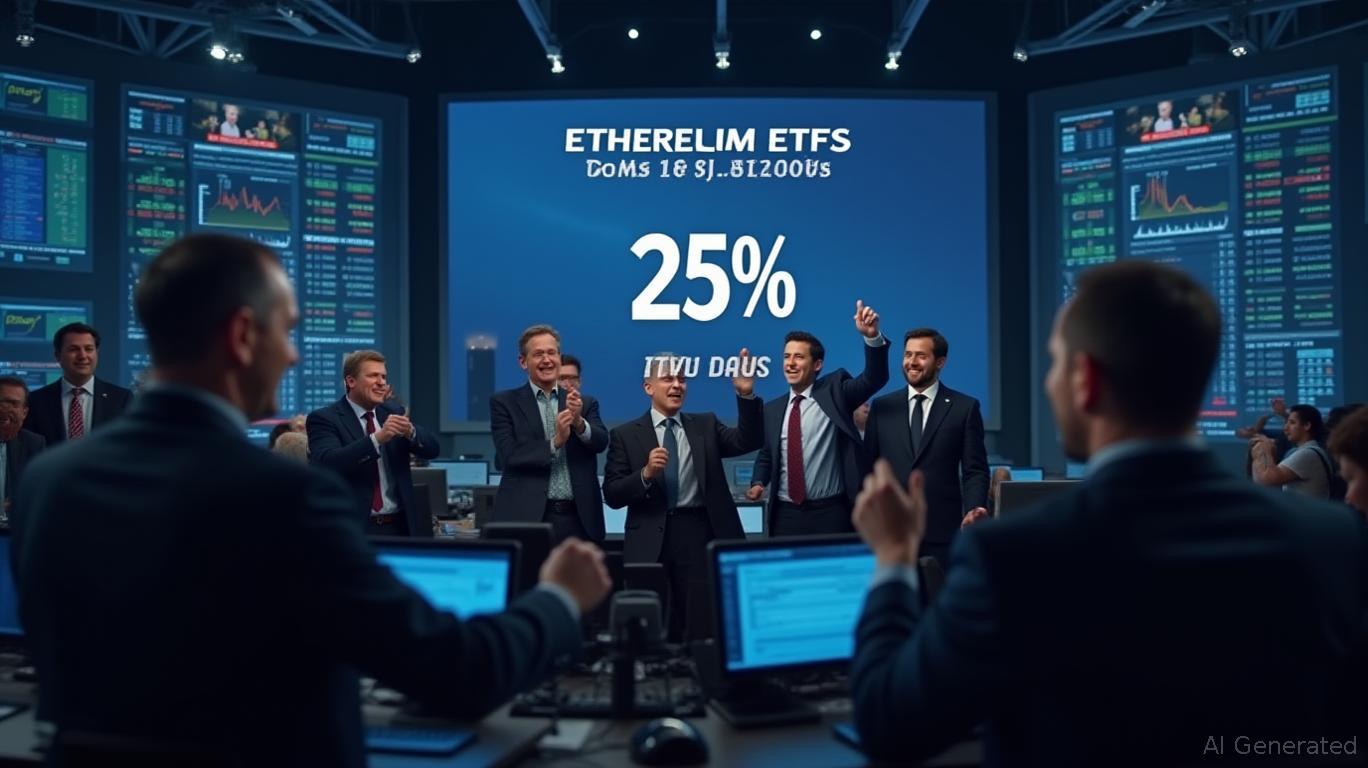AInvest Newsletter
Daily stocks & crypto headlines, free to your inbox
Ethereum exchange-traded funds (ETFs) have achieved a remarkable milestone by recording 15 consecutive days of inflows, totaling $837.5 million since May 16, 2025. This streak represents approximately 25% of the total $3.32 billion in net inflows since the launch of spot Ethereum ETFs in July 2024. On June 6, 2025, Ethereum ETFs experienced a single-day inflow of $25.3 million, further extending this record. This growth underscores the increasing demand for Ethereum among institutional investors, signaling a stronger institutional belief in Ethereum’s potential.
The consistent inflows into Ethereum ETFs reflect the growing confidence institutional investors have in Ethereum’s long-term value. Major
, such as and , have significantly contributed to this momentum. BlackRock’s iShares Ethereum Trust (ETHA) has seen nearly $576 million in inflows over the past two weeks, accounting for 71% of the total inflows in that period. Fidelity’s Wise Origin Ether Fund (FETH) follows closely with $123 million in inflows. These developments suggest that institutional investors are increasingly looking at Ethereum as a crucial asset in the cryptocurrency space. Despite some short-term price fluctuations, with Ethereum trading at $2,490 as of June 6, 2025, these inflows indicate a long-term bullish sentiment towards Ethereum.In contrast to Ethereum’s success, Bitcoin ETFs have faced a decline in interest, particularly since May 29, 2025. On that day, Bitcoin ETFs saw outflows totaling $346.8 million. Since then, Bitcoin ETFs have experienced volatile movements, alternating between small inflows and larger outflows. This contrast in performance highlights a shift in institutional focus, with Ethereum gaining more favor than Bitcoin in recent weeks. Analysts predict that, if this trend continues, Ethereum ETFs could surpass $1 billion in cumulative inflows within the next week. Such a milestone would not only further solidify Ethereum’s standing in the crypto market but also demonstrate the growing institutional preference for Ethereum-based financial products.
The Ethereum network has undergone significant improvements with the Pectra upgrade, which has led to a dramatic reduction in
transaction costs. Prior to the upgrade, blob transaction costs were around $16,000 daily, but post-upgrade, these costs have dropped to a fraction of a penny. This cost reduction has made layer-2 networks significantly cheaper to operate, enhancing the scalability and efficiency of the Ethereum network. Despite the increased usage of blobs, rollups have not fully utilized the expanded capacity, leading to a substantial drop in blob prices.The Pectra upgrade introduced EIP-7691, which facilitated blob scaling. This upgrade has resulted in a 33% increase in blob usage since its implementation. However, the reduction in blob costs has also presented challenges for validators. Smaller validators, who may not be able to afford the new costs of processing more data without risking penalties, have been merging into larger operations. This consolidation, while raising concerns about centralization, may actually be decentralizing the Ethereum network by allowing larger operations to handle both the higher stake limits and the growing storage burden.
The Ethereum network's improvements have also had a positive impact on its price. In May, the price of Ethereum surged from around $1,800 to a peak near $2,800, representing a 27% increase over the last 30 days. This price surge, coupled with the continuous inflow into Ethereum ETFs, indicates a growing institutional interest in Ethereum. The Ethereum network's improvements and the growing institutional interest in Ethereum ETFs suggest that Ethereum is poised to continue its upward trajectory in the coming months.

Quickly understand the history and background of various well-known coins

Dec.02 2025

Dec.02 2025

Dec.02 2025

Dec.02 2025

Dec.02 2025
Daily stocks & crypto headlines, free to your inbox
Comments
No comments yet